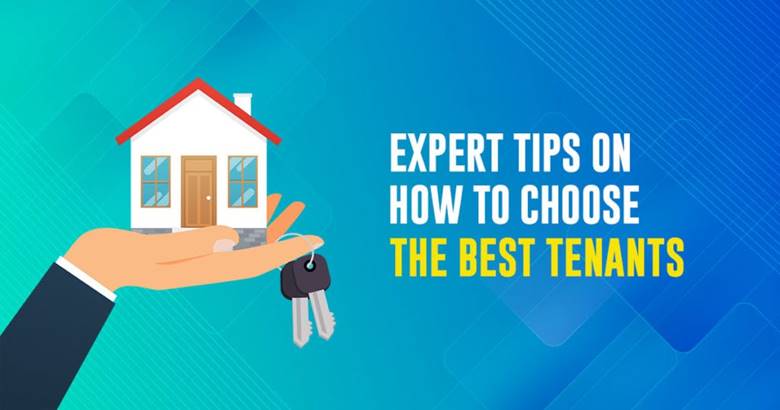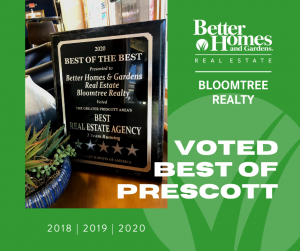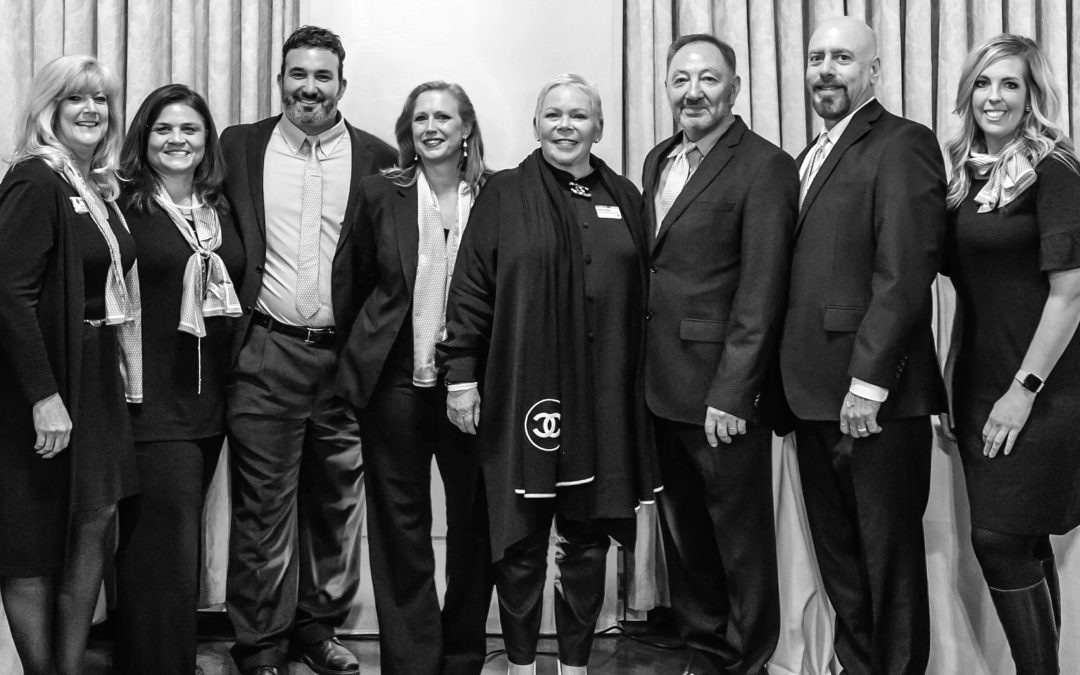PAAR Awards Sheridan Group Choice Bright Light Award

FOR IMMEDIATE RELEASE
Contact: Anna Tobin
Better Homes and Gardens Real Estate | BloomTree Realty
(386) 898-2179
Sheridan awarded Prescott Area Association of Realtors’ Affiliate Choice Bright Light Award
Better Homes and Gardens Real Estate BloomTree Realty Agent recognized for serving others.
PRESCOTT, ARIZONA, September 25, 2020 – Leading local real estate sales professional DJ Sheridan with Better Homes and Gardens Real Estate BloomTree Realty Prescott received Prescott Area Association of Realtors’ Affiliate Choice Bright Light Award.
The award is granted to the realtor that gives inspiration to their peers to succeed, is willing to assist others, and is a shining example of industry participation. PAAR surprised Sheridan with the award today at the membership meeting.
“I am incredibly grateful and completely shocked, I had no idea that this was even coming,” said DJ Sheridan.
The award is given to an agent within the PAAR membership. Past recipients from BloomTree include BloomTree Designated Broker, Sherri Battten, who was the first recipient of the award in 2018.
Co-Owner and Chief Operating Officer, Leslie Guiley, added, “We are so honored to have DJ Sheridan at Better Homes and Gardens Real Estate BloomTree Realty. DJ has tons of energy and you’ll be seeing more of him as he is immersed in this community and upcoming events.”
“PAAR loves celebrating our members and our Affiliate Council does a great job spotlighting Realtors for standout efforts. We are thrilled to present DJ Sheridan with the Bright Light Award and celebrate him for helping to raise the bar for all Realtors,” said PAAR CEO Amanda Creel, CAE, RCE.
“DJ Sheridan is a great choice for PAAR’s Affiliate Council’s Bright Light Award, which was designed to recognize Realtors for inspiring their peers to succeed, their willingness to assist others and is a shining example of industry participation,” said 2020 PAAR President Jeff Bashaw. “This year has proven challenging for all of us, so I am happy to have the opportunity to recognize him on behalf of our Affiliate Council.”
To learn more about Better Homes and Gardens Real Estate BloomTree Realty, visit https://www.bloomtreerealty.com/
To learn more about Prescott Area Association of Relators (PAAR) visit https://www.paar.org/
Better Homes and Gardens Real Estate BloomTree Realty differentiates itself in the real estate industry through the collaborative efforts of over 200 agents in multiple business units- Residential, Commercial and Rental Solutions. BHGRE BloomTree comprises the largest industry segment in the quad cities of Prescott, Prescott Valley, Chino Valley and Dewey-Humboldt with additional offices in Prescott, Prescott Valley, Cottonwood, Sedona and Phoenix. Agents opt-in to a profit-sharing model and through the local Merit Fund and community charities, BHGRE BloomTree Realty shared over $300K to its agents and client’s local interests.
Check out BHGRE BloomTree Realty online:www.bloomtreerealty.com
Experts Give Guidance on Choosing Best Tenants

Better Homes and Gardens BloomTree Realty COO Offers Advice
Leslie Guiley, Co-Owner and Chief Operating Officer of Better Homes and Gardens BloomTree Realty, was selected by Agent Advice to offer guidance on choosing the best tenants. Read the enlightening article below of tips from experts in the real estate industry.
One of the biggest challenges for property managers is finding the right tenants that won’t give them sleepless nights. Pre-screening prospective tenants used to be enough, but it’s becoming increasingly difficult to find renters they can trust.
While a criminal background check, income and employment verification, a credit check, etc. can reveal a prospective tenant’s true identity, they don’t tell the whole story. Despite all of that, many property managers still end up with nightmarish tenants.
So, the question is, how can property managers get the best tenants?
We asked several key experts known for being top solution providers in the real estate industry to get their advice. They discussed and shared relevant tips and ideas about how to get better tenants for properties.
Since real estate experts and property managers both deal with housing and sometimes work hand in hand, real estate experts can also learn and grow by using these tips.
Experts Give Guidance on Choosing Best Tenants

Better Homes and Gardens BloomTree Realty COO Offers Advice
Leslie Guiley, Co-Owner and Chief Operating Officer of Better Homes and Gardens BloomTree Realty, was selected by Agent Advice to offer guidance on choosing the best tenants. Read the enlightening article below of tips from experts in the real estate industry.
One of the biggest challenges for property managers is finding the right tenants that won’t give them sleepless nights. Pre-screening prospective tenants used to be enough, but it’s becoming increasingly difficult to find renters they can trust.
While a criminal background check, income and employment verification, a credit check, etc. can reveal a prospective tenant’s true identity, they don’t tell the whole story. Despite all of that, many property managers still end up with nightmarish tenants.
So, the question is, how can property managers get the best tenants?
We asked several key experts known for being top solution providers in the real estate industry to get their advice. They discussed and shared relevant tips and ideas about how to get better tenants for properties.
Since real estate experts and property managers both deal with housing and sometimes work hand in hand, real estate experts can also learn and grow by using these tips.
BloomTree Agent Provides Advice to REALTORS®

Quicken Loans recently published an article helping Real Estate agents manage their business. They consulted Trent Beaver, a Better Homes and Gardens BloomTree Realty Realtor, to get advice on remaining competitive during all types of real estate markets. Quicken Loavs provided 5 tips to help Realtors Remain Competitive.
READ: 5 Ways Agents Can Stay Competitive As Housing Market Remains Hot
Voted Best Real Estate Agency 2020

FOR IMMEDIATE RELEASE
Contact: Anna Tobin
Better Homes and Gardens Real Estate BloomTree Realty
(386) 898-2179
Better Homes and Gardens Real Estate BloomTree Realty voted #1 for Greater Prescott Area Best Real Estate Agency 2020 by Market Surveys of America.
Prescott, AZ September 1, 2020 – For three years running, leading local real estate agency Better Homes and Gardens Real Estate (BHGRE)BloomTree Realty has been named the #1 Real Estate Agency for the Greater Prescott Area 2020 by Market Surveys of America.
 This recognition is awarded to the agency that receives the most votes via an opt-in online voting process. Votes are tabulated by the number of write-in submissions received by Market Surveys of America.
This recognition is awarded to the agency that receives the most votes via an opt-in online voting process. Votes are tabulated by the number of write-in submissions received by Market Surveys of America.
Co-Owner and Chief Operating Officer, Leslie Guiley said, “This award acknowledges the hard work, dedication and commitment that our leadership team and our agents have to this community. We are so proud to be named the Best Real Estate Agency of Prescott Greater Area for three years in a row!”
Recognized year after year as a leader in residential and commercial real estate, BHGRE BloomTree Realty has received additional awards including the Award for Excellence by the Prescott Chamber of Commerce (2019) and was named the WINNER of the Reader’s Choice Awards (2018) for the Best Real Estate Company by the Daily Courier.
Voting is now open for the “Best of Prescott” 2021 http://www.bestofsurveys.com/vote/175/prescott
To learn more about Better Homes and Gardens Real Estate BloomTree Realty, visit www.bloomtreerealty.com.
About Better Homes and Gardens Real Estate BloomTree Realty
BloomTree Realty, and its owners Nick Malouff, Raymond Zogob, Leslie Guiley and Paul Aslanian, partnered with Better Homes and Gardens Real Estate in early 2019 to bring new opportunity to its agents through training and marketing. In 2019, Better Homes and Gardens Real Estate BloomTree Realty returned over $300K to its agents and the community through the merit fund and community charities. With offices in Prescott, Prescott Valley, Cottonwood, Sedona and Phoenix, Better Homes and Gardens Real Estate BloomTree Realty remains focused on providing exemplary service to its agents and their clients and is committed to doing more and giving more in 2020.
Better Homes and Gardens Real Estate BloomTree Realty Merges with Sumner Commercial

FOR IMMEDIATE RELEASE
Contact: Anna Tobin
(386) 898-2179
anna@bloomtreerealty.com
Real Estate Merger creates largest Commercial Services in Prescott and Surrounding Areas
Better Homes and Gardens Real Estate BloomTree Realty Merges with Sumner Commercial
Prescott, AZ August, 2020 – Better Homes and Gardens Real Estate BloomTree Realty, the number one residential real estate agency in transaction volume in the greater Prescott quad-city area announced they merged with the Sumner Commercial Group (SCG), the largest commercial brokerage in the same area, to capture a significant share of the commercial real estate business.
The Sumner Commercial Group’s entire office, which is comprised of Angie Sumner, Matt Fish, Mark Duncan, Chris Krogedal, Zena Krogedal, Cooper Anderson, and Lisa Cole will join forces with BHGRE BloomTree Realty and operate under the banner of BHGRE BloomTree Realty, Commercial Division.
The Sumner Group managed a significant number of commercial and office buildings which will now be managed by BloomTree Rental Solutions, a division of BHGRE BloomTree Realty. Cooper Anderson will continue to manage these properties under the guidance and oversight of Jenny Browning, the managing partner of BloomTree Rental Solutions.
BHGRE BloomTree Realty’s Director of Commercial Sales, Raymond Zogob, will continue to oversee the Commercial Sales Division.
Zogob stated, “This is a revolutionary shift in the way commercial business is done. In the past it was about the individual agent dealing with their one client, now we have a group that strategically comes together to bring a greater resource to all of our clients, we have a greater brain trust to deliver exceptional service.”
Nick Malouff, CEO and President of the Better Homes and Gardens Real Estate (BHGRE) BloomTree Realty Agency, which currently captures 16% of the real estate market in the Prescott and surrounding areas, stated, “BloomTree is always looking to grow by adding the most professional agents in the market who share our values and vision for real estate. Angie Sumner and her group fit that profile perfectly because of the kind of company she built and the fact that she operated from a value base that we share.”
Angie Sumner created Sumner Commercial to grow her commercial real estate and property management business which became the largest single office commercial brokerage in the area as a result of her focused effort.
Sumner stated this regarding the purpose behind the merger, “I was looking for the right culture, leadership and sustainability with a new partner and BloomTree was my best option to meet all the criteria for a merger. Additionally, I have a great relationship with BloomTree that has gone back decades with the owners, so there was a strong trust factor between us which allowed us to talk honestly and openly about what would work best for both sides.”
Malouff and Sumner have known each other for more than twenty-five years and during that time have collaborated on many professional ventures in real estate and both served on the Prescott Area Association of Realtors (PAAR) Building Committee.
Malouff continued, “So in the end, the merger of the two companies helped both sides achieve their goals and to create a more dynamic and powerful commercial division at BloomTree Realty and it allowed Angie to focus on her own business and bring the additional resources to her existing agents to further their opportunity. Both sides will have greater revenue, more resources and deeper combined knowledge.”
The Clients of Sumner Commercial Group will continue to be served with the highest level of professionalism and will now have the additional resources of the combined companies.
Zogob concludes, “We are better when we come together, we all have a passion for making the greater Prescott area the best place to live, work and play.”
To learn more about Better Homes and Gardens Real Estate BloomTree Realty, visit www.bloomtreerealty.com.
Better Homes and Gardens Real Estate BloomTree Realty and its owners Nick Malouff, Raymond Zogob, and Leslie Guiley, partnered with Better Homes and Gardens Real Estate in early 2019 to bring new opportunity to its agents through training and marketing. In 2019, Better Homes and Gardens Real Estate BloomTree Realty returned over $300K to its agents and the community through the merit fund and community charities. With offices in Prescott, Prescott Valley, Cottonwood, Sedona and Phoenix, Better Homes and Gardens Real Estate BloomTree Realty remains focused on providing exemplary service to its agents and their clients and is committed to doing more and giving more in 2020.
Better Homes and Gardens Real Estate is a dynamic real estate brand that offers a full range of services to brokers, sales associates and home buyers and sellers. Using innovative technology, sophisticated business systems and the broad appeal of a lifestyle brand, Better Homes and Gardens Real Estate LLC embodies the future of the real estate industry while remaining grounded in the tradition of home. Better Homes and Gardens Real Estate LLC is a subsidiary of Realogy Holdings Corp. (NYSE: RLGY), a global leader in real estate franchising and provider of real estate brokerage, relocation and settlement services.
The growing Better Homes and Gardens® Real Estate network includes nearly 13,000 independent sales associates and more than 370 offices serving home buyers and sellers across the United States, Canada, Jamaica, The Bahamas, Australia and New Zealand.
Better Homes & Gardens® is a registered trademark of Meredith Corporation licensed to Better Homes and Gardens Real Estate LLC and used with permission. An Equal Opportunity Company. Equal Housing Opportunity. Each Better Homes and Gardens® Real Estate Franchise is independently owned and operated.
Better Homes and Gardens Real Estate plus BloomTree Realty: Better Together

In the increasingly dog-eat-dog world of real estate sales, Better Homes and Gardens Real Estate BloomTree Realty has chosen a different path: sharing of knowledge and resources to offer better services for homebuyers and sellers.
“It essentially was every agent for himself or herself,” observed Nick Malouff, BloomTree president and CEO, about the real estate business in general. “We didn’t think that was a healthy environment. If there’s anything unique about BloomTree, it’s community. People are rewarded for sharing what they know.”
The BloomTree philosophy clearly is working: it’s the #1 real estate company in the Prescott area, closing one out of every seven deals here last year, Malouff said. Every client gets a third-party survey after closing, and they have awarded BloomTree a phenomenal performance rating of 5 out of 5 stars.
“That level of client care is what’s driven our growth,” BloomTree Co-Founder and Executive VP of Marketing Stacy Stateham said. [Read More]
James Michener Awarded Performance Excellence Award

FOR IMMEDIATE RELEASE
Contact: Anna Tobin
Better Homes and Gardens Real Estate BloomTree Realty
(386) 898-2179
anna@bloomtreerealty.com
James Michener affiliated with Better Homes and Gardens Real Estate BloomTree Realty awarded for performance excellence out of a network of nearly 13,000 sales associates.
Prescott, AZ August 13, 2020 – Leading local real estate sales professional James Michener affiliated with Better Homes and Gardens Real Estate BloomTree Realty in Prescott, Arizona received the 2nd Place Award from Better Homes and Gardens Real Estate LLC in recognition of his outstanding 2019 sales performance.
The award acknowledges the achievement of top performers within the franchise network based on stringent criteria in the categories of total closed units or sales volume. Out of a network of nearly 13,000 independent sales associates and more than 370 offices across the United States, Canada, Jamaica, The Bahamas and Australia, the Michener team has been inducted into a prestigious group of top performers and serves to confirm his dedication to exceptional customer service, marketing, and responsiveness to his clients.
“I am so honored to receive this award, especially from such a prestigious brokerage that has been number one in the market for four years and voted Best of Prescott for three straight years. It’s great to work side by side with the best real estate agents, owners and leadership in the county. I could not have accomplished this without the support of my family and my amazing team,” said James Michener.
Co-Owner and Chief Operating Officer, Leslie Guiley, added, “We are so honored to have the James Michener Team at Better Homes and Gardens Real Estate BloomTree Realty. James came to us as a new agent in 2013 with a strong commitment to success. He worked hard to learn the business, build a team and serve his clients. He has an amazing amount of energy and has proven to be a force to be reckoned with in real estate while simultaneously being a kind and gentle family man. James has built a strong team of agents whom he coaches and is an inspiration to us all.”
To learn more about Better Homes and Gardens Real Estate BloomTree Realty, visit bloomtreerealty.com.
About Better Homes and Gardens Real Estate BloomTree Realty
BloomTree Realty, and its owners Nick Malouff, Raymond Zogob, Leslie Guiley and Paul Aslanian, partnered with Better Homes and Gardens Real Estate in early 2019 to bring new opportunity to its agents through training and marketing. In 2019, Better Homes and Gardens Real Estate BloomTree Realty returned over $300K to its agents and the community through the merit fund and community charities. With offices in Prescott, Prescott Valley, Cottonwood, Sedona and Phoenix, Better Homes and Gardens Real Estate BloomTree Realty remains focused on providing exemplary service to its agents and their clients and is committed to doing more and giving more in 2020.
Understanding and Navigating the Modern Age of the Millennial Real Estate Market

What is a Millennial and Why Should I Care?
To understand the millennial market, it’s probably important to understand what a millennial is, right? In the most basic of terms, a millennial is a person born between the early 80s and early 2000s—a generation that came of age around the millennium. Millennials are one of the largest up and coming generations since the Baby Boomers, with 78.5 million American millennials aging in at 18-34 when 2015 rolled around. To the real estate market this means a whole new pool of clientele that are now at an age that they might be buying their first homes.
Naturally, with this new slew of millennial buyers hitting the marketplace every day, an agent must adopt modern techniques and approaches to marketing and selling to a new generation of buyers who aren’t as dependent on one on one interaction with an agent. Social media and the internet as a whole have impacted the ways in which we go about sales, and it’s only going to continue on a changing track from here on out. Evolving along with the changes is much easier than trying to catch up when you’ve already been left behind.
Statistics are key when it comes to buying and selling—and statistics show that millennials are the biggest upcoming generation of buyers and sellers in decades. According to the Home Buyer and Seller Generational Trend Reports of 2017 from the National Association of Realtors, of these millennials coming into the marketplace:
- 89% will use an agent in some capacity—but due to social media and access to knowledge buyers weren’t otherwise privy to in the past, they may be slightly harder to please.
- 63% of millennial home sellers say they would gladly use their agent again or refer someone else to their agent—this is the lowest percentage of any generation surveyed before.
- 45-50% will find their agent through a friend or family member.
- 35% of the current marketplace falls in the millennial generation, and nearly half of them are ready to buy their very first home.
- 99% of millennial buyers researched homes online before stepping foot in a single open house.
- 60% of millennial buyers found the home they ended up purchasing on some type of mobile device or app.
The average credit score of a millennial is 625, mainly due to student loan default and credit card debt, but that doesn’t mean they are completely written out of the real estate game. Millennials are more likely to qualify under flexible FHA-insured home mortgage loans and are more likely to buy with smaller down payments and larger principles, paid off over a shorter time period.
So, What Happens to the Market Once Millennials Come of Age?
This new era of buying and selling a home is a major shift in comparison to when buyers and sellers were completely dependent on the expertise of a seasoned agent, but that doesn’t mean the job of an agent or broker is antiquated by any means. Millennials now make up 32% of home buyers and the pool is only growing every day. As an agent, it is critical to create an online presence to keep up with the modern era of real estate—a tech savvy agent is going to make a much larger impact on the millennial market.
Though millennials tend to arm themselves with backed research, it doesn’t mean they forego using an actual realtor altogether in their homebuying process. They value a combination of the knowledge they’ve gained through general research alongside the professional and personal guidence a realtor brings to the table. That means they are actively looking to agents and realtors to help them navigate an otherwise confusing terrain. Agents can use this to their advantage, as they are more likely to come at a sale with a knowledgeable buyer—one who may need less help with the basics, but more with the intricacies that come with buying a home.
Understanding the Needs of the Millennial Market
Being thoughtful of the millennial market in terms of “wants and needs” is just as important as understanding the ways in which technology and social media change the market itself (which we will discuss in the next section). Millennials have different hopes, dreams, and aspirations than their parent’s generation. They are more interested in bigger cities and downtown areas than almost any generation before them, mainly because they tend to want to be closer to work.
An agent needs to keep in mind the economic situation these young adults grew up in. While the parents of this generation had buying power at an early age, many millennials have put off investing in major purchases until all the stars have aligned and the deck is stacked in their favor. They’ve personally experienced many years of questionable economic stability, which is why when they are finally ready to make a huge purchase, they want everything to be as perfect as it possibly can. There is a general lean toward avoiding renovations and seeking out homes with less customization and more historical uniqueness. Millennials are far more likely to buy in an urban area, with 21% of people under 34 purchasing in an urban market or city central. According to Business Insider, the median income for a dual-income millennial family in Arizona is around $40,000. Partner this with the fact that most of those people also have tens of thousands of dollars in student loan debt, it is very likely that your millennial buyer won’t want to invest money beyond the purchase price to fix up a house when they can buy one that is move-in ready.
A great strategy when dealing with millennial clients is to focus on AICDC:
- Attention: Grab the attention of potential clients and maintain it
- Interest: Garner interest of potential clients by asking a lot of meaningful questions
- Conviction: Gain the conviction of the client—offer strong favorable opinions/claims and evidence that support those opinions/claims (i.e.-testimonials from past clients)
- Desire: Show your clients housing data numbers and offer special services, like high-end walk-through videos or detailed open houses
- Close: Ask for the close! Be adamant about your client’s conviction so they can feel adamant in their decision
Selling in the Era of Social Media
As the largest upcoming pool of buyers in the real estate world, the millennial market is commanding a nearly complete overhaul of traditional real estate models as we have known them to this point. Agents are at a precipice of having to balance the act of maintaining old-school principles while adopting modern sales techniques.
Growing up in a peer-to-peer world, this generation is empowered by a do-it-yourself attitude, giving them a completely different outlook on the most basic concepts of buying and selling. These are the children of EBay and Etsy—they grew up in a world the encouraged researching before purchasing, and furthermore, getting the best possible price on their investment. Whether they are buying a home or childhood collectables, the millennial generation has mastered the art of using progressive technologies to fulfill their every want and need. Just as young people have been turned onto an entirely new approach to purchasing, they have also been made more aware of the troubles that can come along with being tied town financially to a 30-year mortgage—they are a generation far more likely to pay more over a shorter time period, or come at the sale with as much cash down as they can. They want a deal, and they need you to help them find it!
Effective marketing for an agent wanting to sell to young people involves sharable blogs and videos—sales techniques that provide a wide-ranging net and reach a broader audience. A blog or video posted online can garner a world-wide audience, while still only branching out to a specified and more focused pools of buyers. An agent could obtain a client from a world away simply based on the focus of their web content and presence. Paying attention to Search Engine Optimization, or SEO, can make a world of difference when it comes to website traffic. Ensuring the use of precise and detailed language will often warrant clients to come to you and the not the other way around.
On another note, optimizing social media presence and “online office” outreach apps allow agents to interact with clients and buyers in a way beyond what could have ever been imagined before. To the benefit of the agent, the freedom these technologies provide are priceless, as multitasking with multiple clients at the same time is now a reality. Enhancing mobile technology allows agents to yield messages, change schedules at the drop of a hate, store vital info about each showing, engage with potential clients interactively, and so much more. Agents who utilize scheduling apps, messaging apps, and mobile-friendly websites are able to step outside the normal constraints of the 9-5 lifestyle, and in turn can offer something that has been a struggle for decades—time. These modernized technologies allow agents to streamline their schedules and engage with clients at any time of day, and clients and agents who work on non-traditional schedules will rejoice!
It’s not just about easy scheduling and contact, it’s about making your site, your information, and your listings as sharable as possible. Sharing should be almost mindless—easy enough for a client or potential client to not question whether or not to put the time into sharing. Use simple and clear “share” buttons to make it easy—and utilize the info that can be gathered from who shares with who.
Just a few other ways to incorporate social media and technology for any agent:
- Create a Facebook group to garner leads
- Utilize the “live” feature on Facebook or Instagram to show a property
- Use 360-degree photos and videos
- Build a Chatbot on Messenger that can answer FAQs automatically
- Use excellent and quality photography
- Create multiple landing pages for potential clients to come upon in searches
- Utilize keyword searches
And in the End…
Staying relevant in the ever-changing world of real estate is the main goal of most agents out there today. Keeping up to date on technologies and changes in social media outreach can make or break a business in the modern age. Maintaining a prominent social media and online presence is key to maintaining a flourishing business. Garnering clientele takes more creativity than ever before, but the sheer number of clients that can be gained in a short amount of time make the extra effort worth it. The real estate market is forever changing and keeping up with the times and technologies will always be the best way to advocate for yourself and your business!
What to Expect from a Home Inspection

Navigating the Home Buying Process
One of the very first steps to take after putting an offer in on a new home is making sure a home inspection is completed. Inspections can be a bit nerve-wracking, but don’t fear! The following is a quick rundown of all the things you’ll need to know when planning for, arranging, and attending a home inspection:
First you may be wondering…
Where do I find an inspector?
Home inspection is not federally regulated, so it’s important to ask for recommendations from people you know and trust. Whether that be your co-worker, your mother, your lender, or your agent is up to you—but finding a trusted inspector is key to ensuring your confidence in their evaluation. Though there are no national requirements pertaining to inspectors, there are plenty of databases that buyers can refer to verify an inspector. The National Association for Home Inspectors and International Association of Certified Home Inspectors both require members to pass an exam, honor a code of ethics, and continue their education as often as needed.
The good news is, in Arizona, inspectors must be licensed and must meet certain requirements set forth by the state to verify that they meet current rules, standards, and regulations. Most buyers in Arizona can rest assured that their inspector is qualified for the job!
Once you find an inspector…
Who finances the inspector? Who arranges the inspection?
Traditionally, the buyer pays for the inspection, however, some buyers negotiate the price into their offer, and insist that the seller pay. Most realtors and agents, though, would recommend the buyer choose and arrange the inspector, just to ensure the inspection itself is free of bias and personal ties (to buyer and seller).
How do I pay for it and what does it cost?
In 2018, the average inspection ran between $277-$388, but at the end of the day, it really comes down to the location and size of the home being inspected. While the price of the inspection may go up with the size of the home, it’s important not to skimp on an inspection. If you get a quality reference, but the price tag is a bit high, don’t low bid for a far less reputable inspector. Quality should always prevail.
Once the inspection is scheduled and paid for, what will the inspection look like?
A good inspector will get into every possible nook and cranny to compile a summary that will include checking:
- HVAC systems
- Interior plumbing
- Electrical systems
- Roof
- Basement/Structural components
- Attic
- Floors
- Windows & doors
- Foundation
The checklist the inspector will amass will look at the above functions with scrutiny, so it is inevitable that the checklist the buyer will receive back will have a shocking amount of issue to address. As a buyer, it’s important to not focus on the number of issues addressed, but rather look at the severity of the them. Some problems can be dealt with easily, like chipped paint and a missing tile. Other problems can be deal breakers, like a complete roof renovation or major plumbing complications.
The inspector will provide the buyer with an extensive summarized compilation of all the notes and pictures taken throughout the inspection, as well as estimates on the longevity of major equipment and systems that are integral to the home (i.e. roof, structure, paint, garage doors, etc.).
How long will the process take?
There are a number of variables to take into account when trying to gauge the time an inspection will take. The size of the home, the thoroughness of the inspector, the number of defects, and the effort the owner put in to preparing for the inspection will all account for different durations of time the inspection can take. It’s safe to assume it will take over two hours, maybe even up to four. It is highly recommended that the buyer is present for the inspection whenever possible. It allows for exploration of the property and the opportunity to ask questions about components of the home that may need explaining—not to mention the benefit of being on-site to witness first-hand any concerning issues that might present themselves.
How should I prepare as a buyer/seller?
The best way to prepare as a seller:
- Leave all keys available (garage, electrical panels, etc.)
- Ensure all pilot lights are on (fireplace, furnace, etc.)
- Tidy up—especially in basement and attic areas (inspector needs to be able to get to furnace, HVAC systems, water heaters, etc.)
- Clean up the yard—inspector needs to get to drainage point and septic systems
- If the space is currently unoccupied, make sure electric, gas, etc. are turned back on
The best way to prepare yourself as the buyer:
- Expect a lengthy list of minor issues and a few possible major ones
- Ask to attend the inspection
- Remember no home is perfect and without problems
The process of buying a home can be beyond stressful—but it doesn’t have to be. Thank you for allowing us to help guide you through it and hopefully ease your nerves as you embark on one of the biggest purchases of your life!


 Facebook
Facebook
 X
X
 Pinterest
Pinterest
 Copy Link
Copy Link

